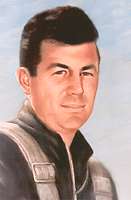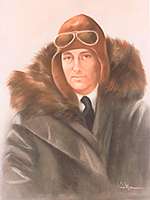General James H. Doolittle
Inducted in 1969
First To Make An All-Blind Instrument Flight From Take Off to Landing, 1929
1896 – 1993
Beginning in the 1920s, “Jimmy” Doolittle compiled an impressive record as an air pioneer. He initially earned national attention in September 1922 when he made the first transcontinental crossing of the United States in a single day, traveling 2,100 miles in 21 hours. In 1927, Doolittle was the first pilot to complete an “outside loop,” a gravity-defying maneuver many considered impossible.
In 1928, Doolittle was released by the Army to head the Full Flight Laboratory. He quickly became involved with the problems of flight in poor visibility, especially with a project to develop instrument flying to combat the menace of fog. Newly developed radio aids, in conjunction with the Sperry gyro-horizon and directional gyro, gave Doolittle the equipment he needed to succeed. On September 24, 1929, flying in a hooded cockpit of a Consolidated NY-2 […]









